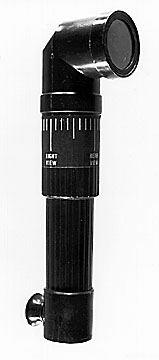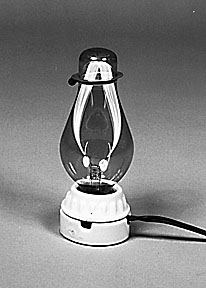Physics and Toys: Physics Fun for Everyone
Raymond C. Turner
All too often when the word physics is mentioned people have a very
negative reaction. Fortunately the basic principles of physics can
often be demonstrated, as well as made fun, by using ordinary children's
toys. By understanding how these toys work the observers can better
understand the world around them. Toys also have the added advantage
that they can be used with students of all ages. I used to say that
I could use toys to teach physics to students from 8 to 80, but I have
found that I can extend that range. I have successfully used the toys
in presentations to pre-kindergarten classes and elder-hostel groups,
as well as all ages in between. The detailed analysis of the toys differs
depending on the background of the observers, but in every case the
physics is the same and the toys allow for a non-threatening and fun
presentation.
There are any number of toys which can be used to illustrate various
physical principles of mechanics. A Hot Wheels race car and track can
be used to demonstrate velocity and acceleration, or be analyzed by
using energy concepts, while a water rocket can be used to demonstrate
the principle of momentum. This essay will be limited, however, to
discussing several toys that deal with magnetism and light. I am also
limited in this discussion, in that a primary advantage of toys is
that they are very visual, and I cannot even show you a picture of
the toys. I hope that I can describe the toys sufficiently, or that
you have seen them previously, so that this discussion is meaningful.
 A toy periscope
can be used to demonstrate reflection of light and image formation
with flat mirrors. A particularly interesting version is the rotating
periscope. While a periscope is usually used to look at an object in
front of you, the top of this periscope can be rotated about the vertical
axis so that you can look behind you. (This might be particularly useful
for teachers who are writing on the chalkboard, and need to keep an
eye on their students.) A result that makes this more useful as a teaching
device, is that when you rotate the top mirror in this way, the image
is inverted. That is, the image is in the normal upright position when
looking straight ahead, but inverted when you look behind you. (Now
you know why submarine commanders in the movies always turned with
their periscopes.) Examination of the toy periscope shows that it contains
two mirrors, one in the top and one in the bottom, each of which is
at an angle of 45° to the vertical. You should be able to quickly
sketch two light rays from the object to your eye in order to analyze
the upright and inverted images. This is exactly what I have my students
do in order to have them begin to understand image formation using
light rays. A toy periscope
can be used to demonstrate reflection of light and image formation
with flat mirrors. A particularly interesting version is the rotating
periscope. While a periscope is usually used to look at an object in
front of you, the top of this periscope can be rotated about the vertical
axis so that you can look behind you. (This might be particularly useful
for teachers who are writing on the chalkboard, and need to keep an
eye on their students.) A result that makes this more useful as a teaching
device, is that when you rotate the top mirror in this way, the image
is inverted. That is, the image is in the normal upright position when
looking straight ahead, but inverted when you look behind you. (Now
you know why submarine commanders in the movies always turned with
their periscopes.) Examination of the toy periscope shows that it contains
two mirrors, one in the top and one in the bottom, each of which is
at an angle of 45° to the vertical. You should be able to quickly
sketch two light rays from the object to your eye in order to analyze
the upright and inverted images. This is exactly what I have my students
do in order to have them begin to understand image formation using
light rays.
Question: What would you observe if the top mirror in the rotating
periscope were rotated by 90° about the vertical so that you
were looking to one side? This is not as easy to analyze since
the tracing of light rays must be in three dimensions. (The answer
is at the end of the article.)
A more complex toy that became popular several years ago is called
laser tag. It consists of a "laser" gun and a target. The
gun emits an invisible beam of radiation, and the target is a sensor
which emits an audible signal when the wearer is "tagged." The
scientific question that can be asked is, "What are the properties
of this radiation?" There are any number of specific questions
that can be asked and then answered by investigation. Does the beam
travel in straight lines or does it bend around corners? Can the beam
be reflected and if so, does it behave like light when it is reflected?
Can the beam be refracted? Can it be diffracted with a diffraction
grating? Is the beam transmitted through a sheet of paper?
If you perform some of these experiments, you find, for example,
that the beam can be reflected from a mirror or a sheet of metal, and
that it obeys the law of reflection. The beam is also found to refract
when it is sent through plexiglass and it is found to obey Snell's
law of refraction. Perhaps surprisingly, it is found that the beam
will transmit through a sheet of paper. The particular version of this
toy that I prefer to use, because it does not have so many bells and
whistles, is called the infrared blaster. With this name it should
not be any surprise to you that when a diffraction measurement is made,
the beam is found to have a wavelength of about 930ÿnm, that is,
it is an infrared beam. This is one of my favorite physics toys in
that it can be used to illustrate how a physicist goes about investigating
the properties of an unknown, and then good experimental results can
be obtained.
 Another
toy, or perhaps better called a novelty, is a flicker light, which
you have undoubtedly seen in a toy store or gift shop. This is an electric
light bulb in which the filament vibrates in an erratic fashion that
is supposed to simulate a flickering candle. What makes its filament
vibrate? Examination of the bulb shows that the wire filament is free
to move somewhat in the bulb, and there is a magnet near the filament.
When a current flows in the filament there is a magnetic force on it
due to the field of the permanent magnet. This magnetic force is in
a direction perpendicular to both the field and the current. Since
the light is operating on the usual 60 Hz ac line, the direction of
the current reverses 60 times per second and so the direction of the
force on the filament changes at the same rate. This causes the filament
to vibrate back and forth, but at a rate too rapid to be followed by
our eyes. So why does the light appear to flicker? Another
toy, or perhaps better called a novelty, is a flicker light, which
you have undoubtedly seen in a toy store or gift shop. This is an electric
light bulb in which the filament vibrates in an erratic fashion that
is supposed to simulate a flickering candle. What makes its filament
vibrate? Examination of the bulb shows that the wire filament is free
to move somewhat in the bulb, and there is a magnet near the filament.
When a current flows in the filament there is a magnetic force on it
due to the field of the permanent magnet. This magnetic force is in
a direction perpendicular to both the field and the current. Since
the light is operating on the usual 60 Hz ac line, the direction of
the current reverses 60 times per second and so the direction of the
force on the filament changes at the same rate. This causes the filament
to vibrate back and forth, but at a rate too rapid to be followed by
our eyes. So why does the light appear to flicker?
While the magnet for most of these lights is mounted inside the bulb,
I was fortunate enough to obtain a magnetic wild flicker bulb which
had the magnet mounted on the outside. This allowed me to move the
magnet away from the bulb, so that I could see the effect of reducing
the magnetic field at the filament. As you would expect, the further
the magnet was moved away, the smaller the amplitude of the vibration.
But this permits another aspect of the vibration to be observed. When
the magnetic field is small, the vibration of the filament is regular
(60 Hz) and is observed only as an apparent broadening of the filament.
As the magnet is moved closer to the bulb, the amplitude of this smooth
vibration increases until suddenly the filament begins to wildly flicker.
This flicker is at a much lower frequency than 60 Hz and its rate is
presumably determined by the mechanical resonant frequencies of the
filament. The onset of this flicker is most likely a demonstration
of chaotic motion that occurs when the amplitude of the motion is large
enough to cause significant nonlinear effects. This simple toy thus
demonstrates the magnetic force on a current carrying wire, as well
as serving as a means for introducing the concept of chaos.
These are only a few of the many toys that can be used to illustrate
basic physical principles. If you would like to see several other toys
in action, look at the web site [http://www.clemson.edu/phys-car].
Only your imagination and ingenuity limit you in your application of
the fundamental laws of physics to ordinary objects, even toys. Physics
can be fun not only for students and others, but also for the teacher.
By using toys, physics can be fun for everyone!
Answer to the question: It is found that the image is turned on
its side.
Raymond C. Turner is an Alumni Distinguished Professor of Physics
at Clemson University in South Carolina. He has recently received
the first AAPT Award for Excellence in Undergraduate Physics Teaching.
This article is based on an Essay in Fundamentals of Physics, 4th
ed., E11:1-3, D.ÿHalliday, R. Resnick, and J. Walker, Wiley,
1993.
|